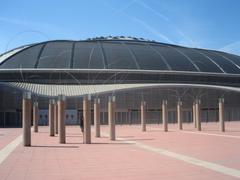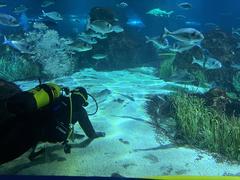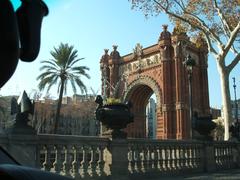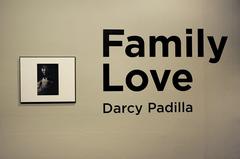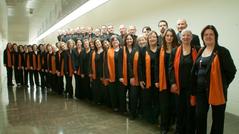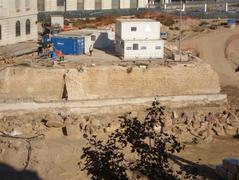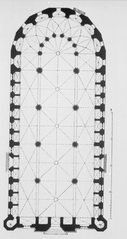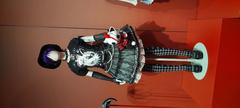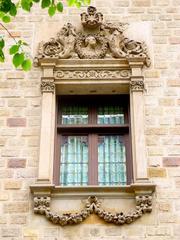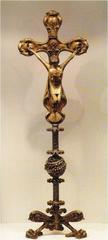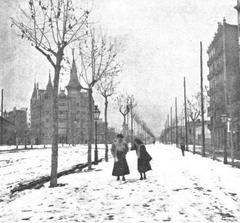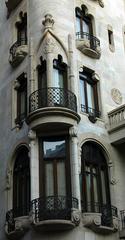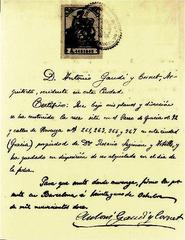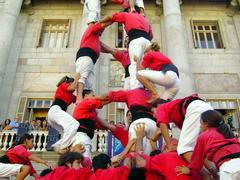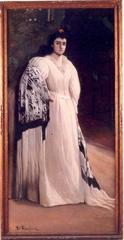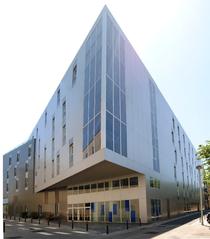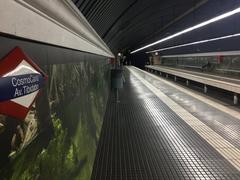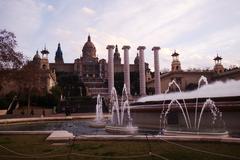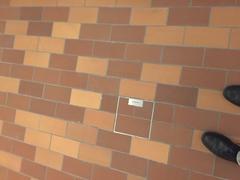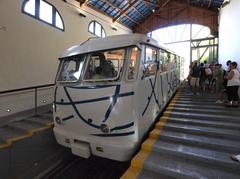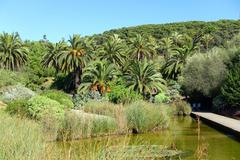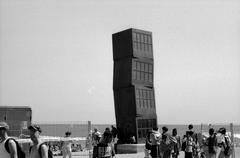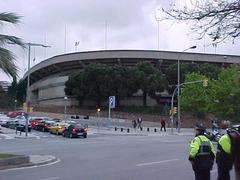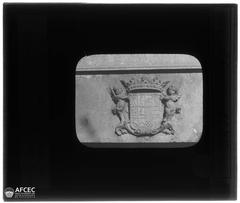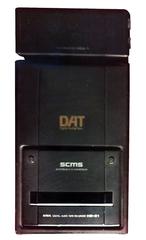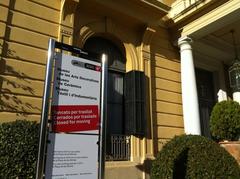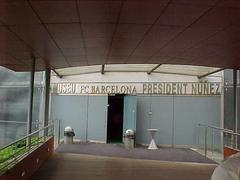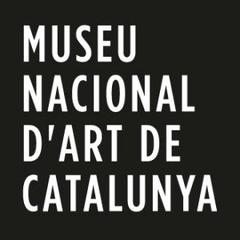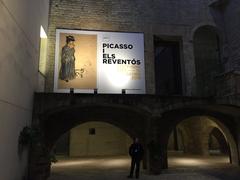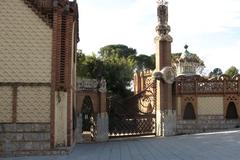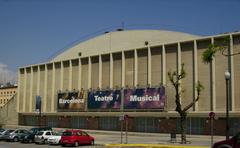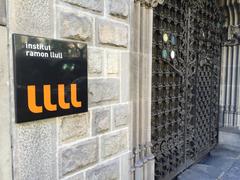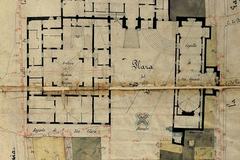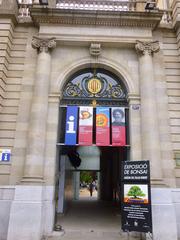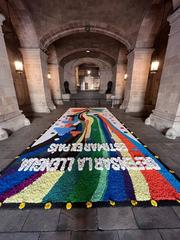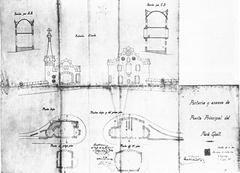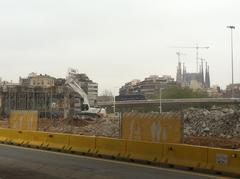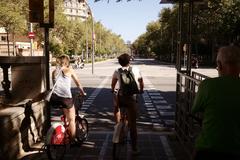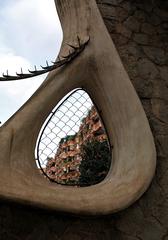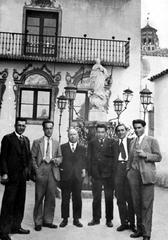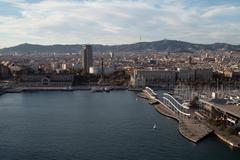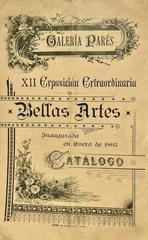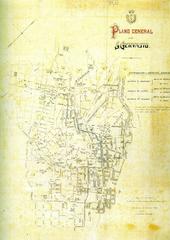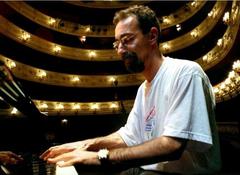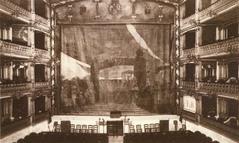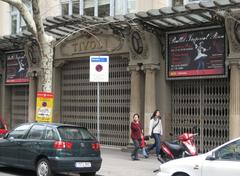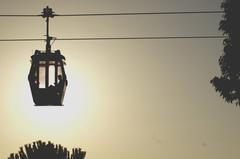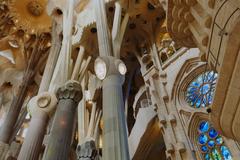O

{'date': '03/07/2025', 'task': {'model': 'gpt-4.1-mini', 'query': 'Comprehensive guide to visiting Fabra Observatory, Barcelona, Spain: history, significance, visitor tips, and everything tourists need to know for a memorable experience.', 'verbose': False, 'guidelines': ["Keyword Research: Identify relevant keywords that potential visitors are likely to search for, such as '[Monument Name] visiting hours,' '[Monument Name] tickets,' and '[City] historical sites.' Use these keywords strategically throughout the article, including in the title, headers, and body text, but avoid keyword stuffing.", 'Engaging and Informative Title: Craft a title that is both SEO-friendly and compelling to encourage clicks. Include the main keyword and make it clear what the article will cover.', 'Structured Content: Use headings (H1, H2, H3) to organize the content effectively. This helps with SEO and makes the article easier for readers to navigate. Include an introduction that hooks the reader, a detailed body that covers all relevant aspects, and a conclusion that summarizes the key points.', 'Comprehensive Coverage: Address common questions and topics of interest such as the history of the monument, its cultural significance, visitor information (e.g., ticket prices, opening hours), travel tips, nearby attractions, and accessibility. Include sections that might be unique to the monument, like special events, guided tours, and photographic spots.', 'Quality Content: Ensure the content is well-researched, accurate, and provides real value to readers. Use reliable sources and provide factual information. Write in a clear, engaging, and accessible style. Consider your audience and use language that is appropriate for those likely to visit the monument.', 'Visuals and Media: Incorporate high-quality images or videos of the monument. These should be optimized for the web (correct sizing, alt tags with keywords). Consider interactive elements like virtual tours or maps.', 'Internal and External Links: Include links to other related articles on your site to encourage deeper engagement (internal links). Link to official websites for the monument or credible sources for further reading (external links).', 'FAQ: Incorporate FAQ sections to target voice search queries and featured snippets', 'Visit and Stay Up to Date: End the article with a call to action, such as encouraging readers to download our mobile app Audiala, check out other related posts, or follow on social media for more updates.'], 'max_sections': 4, 'publish_formats': {'pdf': False, 'docx': False, 'markdown': True}, 'follow_guidelines': True}, 'title': 'Fabra Observatory, Barcelona: A Comprehensive Visitor’s Guide', 'report': '# Fabra Observatory Barcelona Visiting Hours, Tickets & Visitor Guide\n\n#### Date: 03/07/2025\n\n## Introduction: History and Significance\n\nPerched atop Tibidabo Mountain, the Fabra Observatory is a celebrated emblem of Barcelona’s scientific and cultural legacy. Since its founding in 1904—thanks to the generosity of Camil Fabra i Fontanills, Marquis of Alella—the observatory has been a hub for astronomical, meteorological, and seismological research. Its Art Nouveau building, designed by Josep Domènech i Estapà, is a rare architectural gem in the world of observatories, echoing the ambitions of early 20th-century Catalan modernism ([Astronomical Heritage](https://www3.astronomicalheritage.net/index.php/show-entity?identity=164&idsubentity=1); [Europhysics News](https://www.europhysicsnews.org/articles/epn/pdf/2013/03/epn2013443p27.pdf); [Barcelona Turisme](https://www.barcelonaturisme.com/wv3/en/page/4247/.html)).\n\nThroughout its existence, Fabra Observatory has fostered major scientific achievements, including the discovery of Titan’s atmosphere and several minor planets under its first director, Josep Comas i Solà. It also boasts one of Europe’s most continuous meteorological records and remains a key seismic monitoring site for the region. Today, the observatory harmonizes its rich scientific heritage with vibrant public engagement—offering guided tours, educational programs, and special events like the renowned "Dinner with the Stars." Its location provides visitors with panoramic views of Barcelona, making it a top destination for science lovers, history enthusiasts, and travelers alike.\n\n---\n\n## Table of Contents\n\n- [Origins and Foundation](#origins-and-foundation)\n- [Architectural Significance](#architectural-significance)\n- [Early Scientific Endeavors](#early-scientific-endeavors)\n - [Astronomical Achievements](#astronomical-achievements)\n - [Meteorological and Seismological Contributions](#meteorological-and-seismological-contributions)\n- [Evolution and Modernization](#evolution-and-modernization)\n- [Visitor Information: Hours, Tickets, and Getting There](#visitor-information-hours-tickets-and-getting-there)\n- [Cultural and Scientific Role in Barcelona](#cultural-and-scientific-role-in-barcelona)\n- [Special Events and Guided Tours](#special-events-and-guided-tours)\n- [Accessibility](#accessibility)\n- [Nearby Attractions](#nearby-attractions)\n- [Visitor Tips](#visitor-tips)\n- [Frequently Asked Questions (FAQ)](#frequently-asked-questions-faq)\n- [Preservation and Legacy](#preservation-and-legacy)\n- [References](#references)\n\n---\n\n## Origins and Foundation\n\nThe Fabra Observatory arose from the ambitions of the Royal Academy of Sciences and Arts of Barcelona (RACAB) in the late 19th century. Initial plans were stymied by funding issues until Camil Fabra i Fontanills donated 250,000 pesetas in 1901. Construction began soon after atop Tibidabo, and the observatory was inaugurated on April 7, 1904, by King Alfonso XIII ([Europhysics News](https://www.europhysicsnews.org/articles/epn/pdf/2013/03/epn2013443p27.pdf)).\n\n---\n\n## Architectural Significance\n\nDesigned by Josep Domènech i Estapà, the observatory’s Art Nouveau architecture distinguishes it from other scientific institutions of its era. Its octagonal dome and decorative flourishes reflect both classical influences and Catalan Modernism, placing it among a select group of architecturally significant observatories worldwide ([Astronomical Heritage](https://www3.astronomicalheritage.net/index.php/show-entity?identity=164&idsubentity=1)).\n\n---\n\n## Early Scientific Endeavors\n\n### Astronomical Achievements\n\nUnder Josep Comas i Solà, the observatory became internationally recognized for its astrometric research. Comas i Solà discovered eleven minor planets and comet 32P/Comas Solà, and in 1907, he was the first to detect an atmosphere on Titan, Saturn’s largest moon—a finding later confirmed by spectroscopy ([Europhysics News](https://www.europhysicsnews.org/articles/epn/pdf/2013/03/epn2013443p27.pdf)).\n\n### Meteorological and Seismological Contributions\n\nMeteorological data collection began in 1913 and remains unbroken, providing invaluable records for climate research. The Seismological Section, established in 1907, was instrumental in recording regional seismic events and continues to monitor earthquakes, using both local and remote sensors ([Astronomical Heritage](https://www3.astronomicalheritage.net/index.php/show-entity?identity=164&idsubentity=1)).\n\n---\n\n## Evolution and Modernization\n\nFabra Observatory has continually adapted to scientific and technological changes. Despite challenges like increasing light pollution, the institution has expanded its research with remote robotic telescopes and strengthened collaborations with international observatories ([WeBarcelona](https://www.webarcelona.net/barcelona-events/visit-fabra-observatory-and-dinner-stars)). Its meteorological and seismological programs have also been modernized and integrated with regional networks ([Astronomical Heritage](https://www3.astronomicalheritage.net/index.php/show-entity?identity=164&idsubentity=1)).\n\n---\n\n## Visitor Information: Hours, Tickets, and Getting There\n\n**Opening Hours:**\n- **Daytime Visits**: Tuesday to Sunday, 10:00 AM–2:00 PM (guided tours available, check for latest schedules).\n- **Night Visits**: Friday and Saturday, 7:30 PM–10:30 PM (advance booking required; subject to weather).\n\n**Ticket Prices:**\n- **Daytime Guided Tour**: €10 (discounts for students, seniors, and children).\n- **Nighttime Observation**: €20 (includes telescope viewing & presentations).\n- **Special Events**: "Dinner with the Stars" ranges from €79–€98.50 per person and includes dinner, a scientific talk, tour, and stargazing.\n\n**Booking:** Purchase tickets online via the [official website](https://observatorifabra.cat) or at the entrance. Advance booking is highly recommended for night visits and special events ([sternalia.com](https://www.sternalia.com/en/guided-tours-fabra-observatory.html)).\n\n**Getting There:**\n- **By Public Transport**: Bus 196 from Plaça Catalunya to Tibidabo, then a short walk or taxi.\n- **By Car**: On-site parking is available, but limited.\n- **Funicular**: From Plaça Dr. Andreu to Tibidabo Amusement Park, then walk to the observatory.\n\n---\n\n## Cultural and Scientific Role in Barcelona\n\nFabra Observatory is not just a research center, but a cultural landmark protected as a Cultural Asset of National Interest. It played a historic role in setting Barcelona’s official time and continues to foster public engagement through educational programs, guided tours, and popular events such as "Dinner with the Stars" ([Astronomical Heritage](https://www3.astronomicalheritage.net/index.php/show-entity?identity=164&idsubentity=1); [WeBarcelona](https://www.webarcelona.net/barcelona-events/visit-fabra-observatory-and-dinner-stars); [Spain Inspired](https://spaininspired.com/barcelona-july/)).\n\nThe observatory’s museum and regular outreach activities make it a key contributor to science education and cultural life in Barcelona.\n\n---\n\n## Special Events and Guided Tours\n\n- **Daytime Guided Tours**: Sundays and public holidays, 11:00 AM–1:00 PM (no reservation needed; tours in Catalan, with Spanish/English upon request).\n- **Night Visits**: Stargazing with the historic Mailhat double refractor telescope (booking required).\n- **"Dinner with the Stars"**: June–October, combining fine dining, science talks, and celestial observation (advance reservation essential).\n\n---\n\n## Accessibility\n\nThe observatory’s historic structure means access to some areas (like the dome and terrace) is only possible by stairs; there is no elevator. Main visitor areas are wheelchair accessible at ground level, and assistance can be arranged for visitors with mobility concerns. Large bags and bulky items must be stored on the ground floor.\n\n---\n\n## Nearby Attractions\n\nCombine your visit with:\n- **Tibidabo Amusement Park**: Historic rides and family entertainment.\n- **Temple Expiatori del Sagrat Cor**: Neo-Gothic basilica with city views.\n- **Collserola Natural Park**: Hiking trails and nature exploration.\n- **Torre Collserola**: Observation deck with panoramic vistas.\n\n---\n\n## Visitor Tips\n\n- Book tickets early, especially for night visits and special events.\n- Wear comfortable shoes; expect stairs and walking.\n- Bring weather-appropriate clothing, especially for evening sessions.\n- Take advantage of public transportation, as parking is limited.\n- Photography is allowed, but flash and tripods may be restricted during telescope sessions.\n\n---\n\n## Frequently Asked Questions (FAQ)\n\n**Q: What are the Fabra Observatory visiting hours?** \nA: Daytime: Tuesday–Sunday, 10:00 AM–2:00 PM; Nighttime: Friday & Saturday, 7:30 PM–10:30 PM.\n\n**Q: How do I buy tickets?** \nA: Online via the [official Fabra Observatory website](https://observatorifabra.cat) or at the entrance. Advance booking recommended for night visits and events.\n\n**Q: Is the observatory accessible for people with disabilities?** \nA: Limited due to stairs and lack of elevators, but ground-level areas are accessible. Contact staff for assistance.\n\n**Q: Are tours available in English?** \nA: Yes—Saturdays for English, and regularly in Catalan and Spanish.\n\n**Q: Can children visit?** \nA: Yes; tours and events are suitable for families and educational for children.\n\n**Q: Can I take photographs?** \nA: Yes, except flash/tripod use may be restricted during telescope sessions.\n\n**Q: Is there an on-site café or restaurant?** \nA: Only during special events like "Dinner with the Stars"; otherwise, food options are limited.\n\n---\n\n## Preservation and Legacy\n\nSince its inauguration, the Fabra Observatory has maintained its relevance by adapting to new scientific challenges and expanding public engagement. Its protected status and ongoing research ensure its preservation as a scientific and cultural treasure ([Astronomical Heritage](https://www3.astronomicalheritage.net/index.php/show-entity?identity=164&idsubentity=1)).\n\n---\n\n## Plan Your Visit & Stay Connected\n\nReady to explore Fabra Observatory? \n- Visit the [official website](https://observatorifabra.cat) for updated schedules, ticketing, and event details.\n- Download the Audiala app for interactive tours, AR features, and insider tips.\n- Follow Fabra Observatory on social media for news and events:\n - [Facebook](https://www.facebook.com/fabra.observatori)\n - [Twitter](https://twitter.com/FabraObservatori)\n\n---\n\n## References\n\n- [Astronomical Heritage](https://www3.astronomicalheritage.net/index.php/show-entity?identity=164&idsubentity=1)\n- [Europhysics News](https://www.europhysicsnews.org/articles/epn/pdf/2013/03/epn2013443p27.pdf)\n- [Barcelona Turisme](https://www.barcelonaturisme.com/wv3/en/page/4247/.html)\n- [Sternalia](https://www.sternalia.com/en/guided-tours-fabra-observatory.html)\n- [WeBarcelona](https://www.webarcelona.net/barcelona-events/visit-fabra-observatory-and-dinner-stars)\n- [Spain Inspired](https://spaininspired.com/barcelona-july/)\n\n---\n\n
# Observatorio Fabra, Barcelona: Una Guía Completa para el Visitante
#### Fecha: 03/07/2025
<div id="mygallery">
<a href="/assets/images_cc/Q1373728/0_observatori_fabra_barcelona_weather_station.png" title="Exterior view of the historic Observatori Fabra in Barcelona, a meteorological observatory known for its early 20th-century scientific weather monitoring equipment.">
<img alt="Observatori Fabra in Barcelona with a large dome and antennas on a clear day" src="/assets/images_cc/Q1373728/0_observatori_fabra_barcelona_weather_station_m.png"/>
</a>
<a href="/assets/images_cc/Q1373728/1_fabra-observatory-barcelona-collserola-2006.jpg" title="Photograph of Fabra Observatory located in Collserola near Barcelona taken on August 3, 2006, showcasing the observatory structure under clear skies.">
<img alt="Fabra Observatory in Collserola near Barcelona with clear blue sky" src="/assets/images_cc/Q1373728/1_fabra-observatory-barcelona-collserola-2006_m.jpg"/>
</a>
</div>
## Introducción: Historia y Significado
Encaramado en la cima de la montaña del Tibidabo, el Observatorio Fabra es un emblema celebrado del legado científico y cultural de Barcelona. Desde su fundación en 1904 —gracias a la generosidad de Camil Fabra i Fontanills, Marqués de Alella— el observatorio ha sido un centro de investigación astronómica, meteorológica y sismológica. Su edificio de estilo Art Nouveau, diseñado por Josep Domènech i Estapà, es una joya arquitectónica rara en el mundo de los observatorios, que se hace eco de las ambiciones del modernismo catalán de principios del siglo XX ([Patrimonio Astronómico](https://www3.astronomicalheritage.net/index.php/show-entity?identity=164&idsubentity=1); [Europhysics News](https://www.europhysicsnews.org/articles/epn/pdf/2013/03/epn2013443p27.pdf); [Barcelona Turisme](https://www.barcelonaturisme.com/wv3/en/page/4247/.html)).
A lo largo de su existencia, el Observatorio Fabra ha fomentado importantes logros científicos, incluyendo el descubrimiento de la atmósfera de Titán y varios planetas menores bajo la dirección de su primer director, Josep Comas i Solà. También cuenta con uno de los registros meteorológicos más continuos de Europa y sigue siendo un sitio clave de monitoreo sísmico para la región. Hoy en día, el observatorio armoniza su rico patrimonio científico con una vibrante participación pública, ofreciendo visitas guiadas, programas educativos y eventos especiales como la famosa "Cena con las Estrellas". Su ubicación proporciona a los visitantes vistas panorámicas de Barcelona, lo que lo convierte en un destino de primer nivel para los amantes de la ciencia, los entusiastas de la historia y los viajeros por igual.
## Tabla de Contenidos
- [Orígenes y Fundación](#origins-and-foundation)
- [Significado Arquitectónico](#architectural-significance)
- [Primeros Esfuerzos Científicos](#early-scientific-endeavors)
- [Logros Astronómicos](#astronomical-achievements)
- [Contribuciones Meteorológicas y Sismológicas](#meteorological-and-seismological-contributions)
- [Evolución y Modernización](#evolution-and-modernization)
- [Información para Visitantes: Horarios, Entradas y Cómo Llegar](#visitor-information-hours-tickets-and-getting-there)
- [Papel Cultural y Científico en Barcelona](#cultural-and-scientific-role-in-barcelona)
- [Eventos Especiales y Visitas Guiadas](#special-events-and-guided-tours)
- [Accesibilidad](#accessibility)
- [Atracciones Cercanas](#nearby-attractions)
- [Consejos para Visitantes](#visitor-tips)
- [Preguntas Frecuentes (FAQ)](#frequently-asked-questions-faq)
- [Preservación y Legado](#preservation-and-legacy)
- [Referencias](#references)
---
## Orígenes y Fundación
El Observatorio Fabra surgió de las ambiciones de la Real Academia de Ciencias y Artes de Barcelona (RACAB) a finales del siglo XIX. Los planes iniciales se vieron frustrados por problemas de financiación hasta que Camil Fabra i Fontanills donó 250.000 pesetas en 1901. La construcción comenzó poco después en la cima del Tibidabo, y el observatorio fue inaugurado el 7 de abril de 1904 por el Rey Alfonso XIII ([Europhysics News](https://www.europhysicsnews.org/articles/epn/pdf/2013/03/epn2013443p27.pdf)).
---
## Significado Arquitectónico
Diseñado por Josep Domènech i Estapà, la arquitectura Art Nouveau del observatorio lo distingue de otras instituciones científicas de su época. Su cúpula octogonal y los adornos decorativos reflejan tanto las influencias clásicas como el modernismo catalán, situándolo entre un grupo selecto de observatorios arquitectónicamente significativos en todo el mundo ([Patrimonio Astronómico](https://www3.astronomicalheritage.net/index.php/show-entity?identity=164&idsubentity=1)).
---
## Primeros Esfuerzos Científicos
### Logros Astronómicos
Bajo la dirección de Josep Comas i Solà, el observatorio alcanzó reconocimiento internacional por su investigación astrométrica. Comas i Solà descubrió once planetas menores y el cometa 32P/Comas Solà, y en 1907, fue el primero en detectar una atmósfera en Titán, la luna más grande de Saturno, un hallazgo posteriormente confirmado por espectroscopía ([Europhysics News](https://www.europhysicsnews.org/articles/epn/pdf/2013/03/epn2013443p27.pdf)).
### Contribuciones Meteorológicas y Sismológicas
La recolección de datos meteorológicos comenzó en 1913 y permanece ininterrumpida, proporcionando registros invaluables para la investigación climática. La Sección Sismológica, establecida en 1907, fue fundamental para registrar eventos sísmicos regionales y continúa monitoreando terremotos, utilizando sensores locales y remotos ([Patrimonio Astronómico](https://www3.astronomicalheritage.net/index.php/show-entity?identity=164&idsubentity=1)).
---
## Evolución y Modernización
El Observatorio Fabra se ha adaptado continuamente a los cambios científicos y tecnológicos. A pesar de desafíos como el aumento de la contaminación lumínica, la institución ha ampliado su investigación con telescopios robóticos remotos y ha fortalecido las colaboraciones con observatorios internacionales ([WeBarcelona](https://www.webarcelona.net/barcelona-events/visit-fabra-observatory-and-dinner-stars)). Sus programas meteorológicos y sismológicos también se han modernizado y se han integrado con redes regionales ([Patrimonio Astronómico](https://www3.astronomicalheritage.net/index.php/show-entity?identity=164&idsubentity=1)).
---
## Información para Visitantes: Horarios, Entradas y Cómo Llegar
**Horarios de Apertura:**
- **Visitas Diurnas**: Martes a Domingo, 10:00 AM–2:00 PM (visitas guiadas disponibles, consulte los horarios más recientes).
- **Visitas Nocturnas**: Viernes y Sábado, 7:30 PM–10:30 PM (se requiere reserva previa; sujeto a las condiciones meteorológicas).
**Precios de las Entradas:**
- **Visita Guiada Diurna**: €10 (descuentos para estudiantes, personas mayores y niños).
- **Observación Nocturna**: €20 (incluye observación con telescopio y presentaciones).
- **Eventos Especiales**: "Cena con las Estrellas" oscila entre €79–€98,50 por persona e incluye cena, una charla científica, visita y observación de estrellas.
**Reservas:** Compre las entradas en línea a través del [sitio web oficial](https://observatorifabra.cat) o en la entrada. Se recomienda encarecidamente reservar con antelación para las visitas nocturnas y los eventos especiales ([sternalia.com](https://www.sternalia.com/en/guided-tours-fabra-observatory.html)).
**Cómo Llegar:**
- **En Transporte Público**: Autobús 196 desde Plaça Catalunya hasta Tibidabo, luego un corto paseo o taxi.
- **En Coche**: Hay aparcamiento disponible en el lugar, pero es limitado.
- **Funicular**: Desde Plaça Dr. Andreu hasta el Parque de Atracciones Tibidabo, luego camine hasta el observatorio.
---
## Papel Cultural y Científico en Barcelona
El Observatorio Fabra no es solo un centro de investigación, sino un hito cultural protegido como Bien Cultural de Interés Nacional. Desempeñó un papel histórico en la fijación de la hora oficial de Barcelona y continúa fomentando la participación pública a través de programas educativos, visitas guiadas y eventos populares como "Cena con las Estrellas" ([Patrimonio Astronómico](https://www3.astronomicalheritage.net/index.php/show-entity?identity=164&idsubentity=1); [WeBarcelona](https://www.webarcelona.net/barcelona-events/visit-fabra-observatory-and-dinner-stars); [Spain Inspired](https://spaininspired.com/barcelona-july/)).
El museo del observatorio y las actividades periódicas de divulgación lo convierten en un contribuyente clave a la educación científica y la vida cultural en Barcelona.
---
## Eventos Especiales y Visitas Guiadas
- **Visitas Guiadas Diurnas**: Domingos y festivos, 11:00 AM–1:00 PM (no se necesita reserva; visitas en catalán, con español/inglés a petición).
- **Visitas Nocturnas**: Observación de estrellas con el histórico telescopio refractor doble Mailhat (se requiere reserva).
- **"Cena con las Estrellas"**: Junio–Octubre, combinando alta cocina, charlas científicas y observación celestial (esencial la reserva previa).
---
## Accesibilidad
La estructura histórica del observatorio implica que el acceso a algunas áreas (como la cúpula y la terraza) solo es posible por escaleras; no hay ascensor. Las principales zonas de visita son accesibles para sillas de ruedas a nivel del suelo, y se puede organizar asistencia para los visitantes con problemas de movilidad. Las bolsas grandes y los objetos voluminosos deben guardarse en la planta baja.
---
## Atracciones Cercanas
Combine su visita con:
- **Parque de Atracciones Tibidabo**: Atracciones históricas y entretenimiento familiar.
- **Templo Expiatorio del Sagrat Cor**: Basílica neogótica con vistas a la ciudad.
- **Parque Natural de Collserola**: Rutas de senderismo y exploración de la naturaleza.
- **Torre de Collserola**: Mirador con vistas panorámicas.
---
## Consejos para Visitantes
- Reserve las entradas con antelación, especialmente para las visitas nocturnas y eventos especiales.
- Use calzado cómodo; espere escaleras y caminatas.
- Lleve ropa adecuada para el clima, especialmente para las sesiones vespertinas.
- Aproveche el transporte público, ya que el aparcamiento es limitado.
- Se permite la fotografía, pero el flash y los trípodes pueden estar restringidos durante las sesiones de telescopio.
---
## Preguntas Frecuentes (FAQ)
**P: ¿Cuáles son los horarios de visita del Observatorio Fabra?**
R: Diurno: Martes–Domingo, 10:00 AM–2:00 PM; Nocturno: Viernes y Sábado, 7:30 PM–10:30 PM.
**P: ¿Cómo puedo comprar entradas?**
R: En línea a través del [sitio web oficial del Observatorio Fabra](https://observatorifabra.cat) o en la entrada. Se recomienda reservar con antelación para visitas y eventos nocturnos.
**P: ¿Es accesible el observatorio para personas con discapacidad?**
R: Limitado debido a las escaleras y la falta de ascensores, pero las áreas a nivel del suelo son accesibles. Póngase en contacto con el personal para obtener ayuda.
**P: ¿Hay visitas disponibles en inglés?**
R: Sí, los sábados en inglés, y regularmente en catalán y español.
**P: ¿Pueden visitar los niños?**
R: Sí; las visitas y los eventos son adecuados para familias y educativos para los niños.
**P: ¿Puedo tomar fotografías?**
R: Sí, excepto que el uso de flash/trípode puede estar restringido durante las sesiones de telescopio.
**P: ¿Hay un café o restaurante en el lugar?**
R: Solo durante eventos especiales como "Cena con las Estrellas"; de lo contrario, las opciones de comida son limitadas.
---
## Preservación y Legado
Desde su inauguración, el Observatorio Fabra ha mantenido su relevancia adaptándose a los nuevos retos científicos y ampliando la participación pública. Su estatus protegido y la investigación en curso aseguran su preservación como un tesoro científico y cultural ([Patrimonio Astronómico](https://www3.astronomicalheritage.net/index.php/show-entity?identity=164&idsubentity=1)).
---
## Planifique su Visita y Manténgase Conectado
¿Listo para explorar el Observatorio Fabra?
- Visite el [sitio web oficial](https://observatorifabra.cat) para obtener los horarios actualizados, las entradas y los detalles del evento.
- Descargue la aplicación Audiala para realizar visitas interactivas, funciones de realidad aumentada y consejos de expertos.
- Siga el Observatorio Fabra en las redes sociales para obtener noticias y eventos:
- [Facebook](https://www.facebook.com/fabra.observatori)
- [Twitter](https://twitter.com/FabraObservatori)
---
## Referencias
- [Patrimonio Astronómico](https://www3.astronomicalheritage.net/index.php/show-entity?identity=164&idsubentity=1)
- [Europhysics News](https://www.europhysicsnews.org/articles/epn/pdf/2013/03/epn2013443p27.pdf)
- [Barcelona Turisme](https://www.barcelonaturisme.com/wv3/en/page/4247/.html)
- [Sternalia](https://www.sternalia.com/en/guided-tours-fabra-observatory.html)
- [WeBarcelona](https://www.webarcelona.net/barcelona-events/visit-fabra-observatory-and-dinner-stars)
- [Spain Inspired](https://spaininspired.com/barcelona-july/)
---
